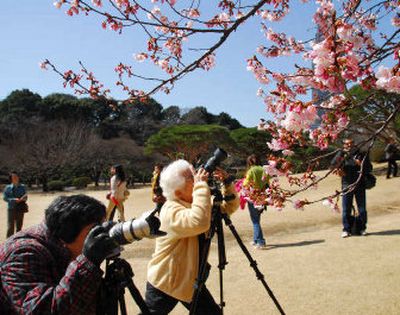They lost their focus

TOKYO — They are some of the most legendary names in photography.
Minolta scored the world’s first successful auto-focus, single-lens reflex camera. Fuji invented 1600-speed film, once the industry’s fastest. Nikon’s fabled F-series made the 35 mm camera the picture-taking workhorse for the last half-century.
Now the companies share a more dubious distinction: abandoning part of the business that made them famous.
Camera makers have battled to adapt to the digital revolution for the last 10 years, but recent retreats by leading brands underline how the industry has turned upside-down.
With interlopers like Sony, Panasonic and Samsung capitalizing on their high-tech know-how, traditional camera makers and their black scrolls of film may soon join 19th-century daguerreotypes as museum-shelf curios.
In just the past few years, digital cameras have catapulted from cutting-edge novelties to mainstream must-haves. But with the market poised to plateau, more players are chasing fewer opportunities and the old guard is losing out.
“It’s inevitable that many of the camera manufacturers in the market today will be either bought up or go out of business,” said Ed Lee, an analyst with InfoTrends Inc., a U.S.-based market research group.
More than three-quarters of all cameras sold today are digital, and digital images are expected to account for 90 percent of all professionally taken photos by 2010, compared with 70 percent now, according to InfoTrends.
Camera buffs were stunned in January when Konica Minolta Holdings Inc., which traces its roots to 1873, said it was quitting the camera business altogether — digital and film — and selling its digital assets to rival Sony Corp.
Nikon Corp. said the same month it would stop making seven of its nine film cameras and concentrate on digital models.
Fuji Photo Film Co., which plans to cut 5,000 jobs, changed directions last month announcing it would spend nearly $8.5 million to diversify into pharmaceuticals.
Europe’s biggest film maker, Germany’s AgfaPhoto GmbH, couldn’t adapt at all; it’s now bankrupt and liquidated.
Meanwhile, Antonio Perez, who is leading Eastman Kodak Co. through a four-year digital remake, has warned that Kodak, the pioneer of point-and-shoot photography, is now “at the worst possible place” after a $1.03 billion third-quarter loss.
Many of the big names in photography were once startups in their own right as they rushed to market in the 1950s with the advent of 35 mm cameras, undercutting and stealing market share from European makers.
Now they are the ones having difficulty adapting to the technology used in digital cameras: image processing chips and sensors called charge-coupled devices, or CCDs, which capture light and transform it into digital signals.
Despite the digital push, amateurs and artists who have shot on film since they first picked up cameras may never completely turns their backs on it, insisting that film still has the edge in lifelike depth, better resolution and more natural contrast.